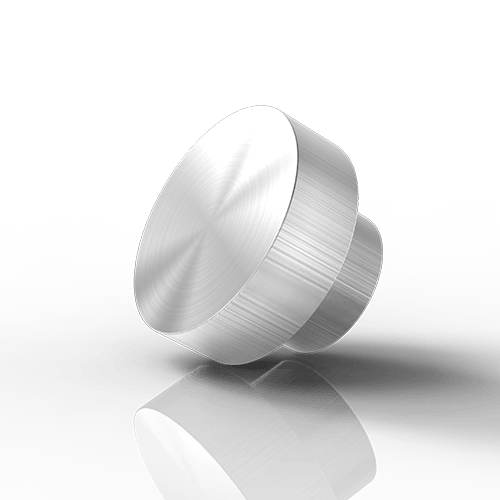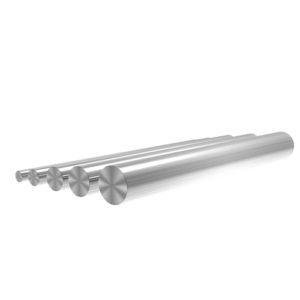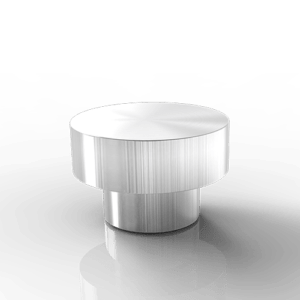Welcome to My Blog!
Before we dive into the content, I’d love for you to join me on my social media platforms where I share more insights, engage with the community, and post updates. Here’s how you can connect with me:
Facebook:https://www.facebook.com/profile.php?id=100090063158454
Now, let’s get started on our journey together. I hope you find the content here insightful, engaging, and valuable.
Introduction

Stainless steel is an alloy of steel that contains at least 10.5% chromium, which gives it excellent corrosion resistance. Among the many types of stainless steel, 316 stainless steel is often regarded as one of the most durable and versatile options. The primary distinction of 316 stainless steel over other grades like 304 is the addition of molybdenum, which enhances its resistance to pitting and crevice corrosion in chloride environments.
The Composition of 316 Stainless Steel
316 stainless steel is made up of:
- Chromium (16-18%): Provides the alloy with resistance to oxidation and corrosion.
- Nickel (10-14%): Adds strength and contributes to the alloy’s overall resistance to oxidation.
- Molybdenum (2-3%): This is the critical element that enhances 316’s resistance to pitting corrosion, especially in marine environments.
- Iron (Balance): The primary element that forms the base structure of the alloy.
This combination of elements creates a material that is highly resistant to various forms of corrosion, especially in harsh environments where other alloys might fail.
Why Corrosion Resistance is Key in Tubing Materials
In many industries, tubes and pipes are used to transport fluids or gases under different conditions. These fluids may be corrosive or may be transported in environments where moisture and humidity are abundant. If the tubing material is not resistant to corrosion, it can weaken over time, leading to leaks, contamination, and even catastrophic failure. Corrosion-resistant materials like 316 stainless steel are essential to ensure the longevity and safety of the system.
Benefits of 316 Stainless Steel Tubing

When compared to other metals and alloys, 316 stainless steel tubing stands out due to its impressive characteristics. Let’s explore why this material is often the best choice for various applications.
Superior Corrosion Resistance
The most significant benefit of 316 stainless steel tubing is its exceptional corrosion resistance. This is due to the high content of chromium and molybdenum, which provides a protective oxide layer on the surface. This layer acts as a barrier against corrosion from water, chemicals, and even extreme temperatures.
316 stainless steel is particularly resistant to:
- Chlorides and Salts: Marine environments and de-icing salts are common causes of corrosion. 316 tubing can withstand these conditions without losing its structural integrity.
- Acidic and Alkaline Environments: The alloy resists corrosion from chemicals, including sulfuric and hydrochloric acids, making it suitable for chemical processing applications.
- Oxidation: Even in high-temperature environments, 316 stainless steel remains resistant to oxidation, making it ideal for industrial systems subjected to heat.
Durability and Longevity
316 stainless steel tubing is extremely durable and can withstand both physical and environmental stress. This makes it an excellent choice for critical applications where failure could lead to costly repairs or even safety hazards. The longevity of 316 stainless steel tubing reduces the need for frequent maintenance or replacements, which is highly beneficial in industrial settings.
Resistance to High Temperatures
Unlike some metals that can weaken or deform at high temperatures, 316 stainless steel retains its strength and form even in extreme heat. This quality makes it suitable for applications such as steam lines, boilers, and industrial machinery where high-temperature resistance is essential.
Hygienic and Easy to Clean
316 stainless steel is easy to clean and maintain, which is an essential factor in industries like food and beverage processing, pharmaceuticals, and medical equipment manufacturing. The smooth surface of the tubing prevents the accumulation of contaminants and bacteria, ensuring that the material remains hygienic and safe for use in sensitive environments.
Resistance to Pitting and Crevice Corrosion
One of the most notable advantages of 316 stainless steel over other stainless steel grades is its resistance to pitting and crevice corrosion. These forms of corrosion typically occur in small, confined spaces where the metal is exposed to chloride-rich environments. The molybdenum content in 316 stainless steel allows it to perform better in such conditions, making it the material of choice for marine applications and other high-risk areas.
Applications of 316 Stainless Steel Tubing
Due to its superior corrosion resistance and durability, 316 stainless steel tubing is used in a wide variety of applications. Below are some of the most common industries that rely on 316 stainless steel tubing.
Marine Industry
The marine industry demands materials that can resist saltwater exposure and the high humidity of ocean environments. 316 stainless steel is widely used in boat building, offshore platforms, and marine equipment because of its excellent resistance to corrosion caused by saltwater.
Chemical and Pharmaceutical Industries
The chemical and pharmaceutical industries often deal with harsh chemicals and sterilization processes. 316 stainless steel tubing is used in the construction of piping systems, reactors, and storage vessels due to its ability to resist corrosion from chemicals and withstand high temperatures.
Food and Beverage Industry
316 stainless steel is commonly used in the food and beverage industry, especially in equipment that comes into contact with food and liquids. The tubing’s smooth surface makes it easy to clean, reducing the risk of contamination and ensuring food safety.
Medical Applications
Medical devices, such as surgical instruments, catheters, and diagnostic equipment, require materials that are both durable and resistant to corrosion. 316 stainless steel’s non-reactive properties make it a popular choice in these applications, ensuring both longevity and hygiene.
Oil and Gas Industry
In the oil and gas sector, 316 stainless steel tubing is often used for pipelines and equipment exposed to harsh chemicals, gases, and extreme temperatures. Its resistance to corrosion ensures the safety and reliability of equipment used in drilling, refining, and transporting oil and gas.
Key Specifications of 316 Stainless Steel Tubing

Below is a table summarizing the general properties of 316 stainless steel tubing. This will help you understand the material’s specifications and how it compares to other types of stainless steel tubing.
| Property | 316 Stainless Steel Tubing | 304 Stainless Steel Tubing |
|---|---|---|
| Corrosion Resistance | Excellent in chloride-rich environments | Good, but less resistant to chlorides |
| Temperature Resistance | Up to 870°C (1600°F) | Up to 870°C (1600°F) |
| Pitting Resistance | Excellent | Moderate |
| Tensile Strength | 515 MPa (74,700 psi) | 505 MPa (73,200 psi) |
| Yield Strength | 205 MPa (29,800 psi) | 215 MPa (31,200 psi) |
| Chemical Resistance | Excellent in acidic and alkaline environments | Moderate to good, less resistant to sulfuric acid |
Conclusion: Is 316 Stainless Steel Tubing the Right Choice for You?

316 stainless steel tubing offers a range of advantages over other materials, particularly in environments where corrosion resistance is crucial. With its superior ability to withstand harsh chemicals, extreme temperatures, and corrosive environments, it is no wonder that 316 stainless steel is the material of choice for many industries. Whether you are in the marine, pharmaceutical, or food and beverage industry, investing in 316 stainless steel tubing can provide long-term benefits in terms of durability, safety, and maintenance costs.
FAQ
What makes 316 stainless steel tubing more corrosion-resistant than other types of stainless steel?
316 stainless steel contains molybdenum, which gives it superior resistance to pitting and crevice corrosion, especially in chloride-rich environments like seawater or industrial chemicals. This makes it far more resistant to corrosion than 304 stainless steel, which lacks molybdenum.
Can 316 stainless steel tubing be used in marine environments?
Yes, 316 stainless steel tubing is ideal for marine environments due to its excellent resistance to corrosion from saltwater and high humidity. This makes it a popular choice for boat building, offshore platforms, and marine equipment.
How does the temperature resistance of 316 stainless steel compare to other materials?
316 stainless steel can withstand temperatures up to 870°C (1600°F) without compromising its structural integrity, making it suitable for high-temperature applications like industrial machinery and steam lines.
Is 316 stainless steel tubing easy to maintain?
Yes, 316 stainless steel tubing is easy to clean and maintain. Its smooth surface prevents the buildup of contaminants, which is particularly important in industries like food processing and healthcare.
What are the disadvantages of 316 stainless steel tubing?
The main disadvantage of 316 stainless steel tubing is its higher cost compared to other stainless steel grades like 304. However, the additional cost is often justified by its superior performance and longevity in challenging environments.
